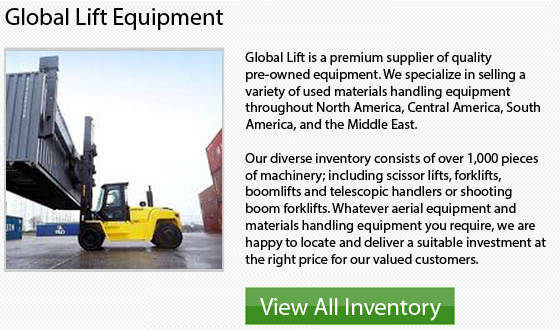
The following add-ons are really helpful for narrow aisle lift trucks:
Side shift: Side shift is an option that permits the lateral movement of the load without having to move the model. This allows loads to be positioned with much more accuracy.
Tilt mast: The optional tilt mast enables the forks to shift both forwards and backwards. This is great in situations where loads aren't completely level. In order to gain greater stability when moving a truck that is loaded, the mast can be tilted back.
Extendable forks: The option of extendable forks helps the "reach" of the forklift to extend for stacking pallets one in front of the other, known as "double-deep" loading.
Operator platforms: Operator platforms enable some NA lift trucks to raise and lower the operator whilst the forks are being raised or lowered. This offers optimum control and visibility when handling cargo at heights of 6 m to 9 m.
Lift Truck on a Ramp
Drivers need to be properly trained and must be assessed and certified. It is vital for anyone using a lift truck to be educated about safety problems and rules. Operators must know how to make adjustments on uneven surfaces or in cases where the weight of the load changes the center of gravity. Safety measures cover safely using a forklift on a ramp, that is a frequent occurrence since the operator would usually have to drive up and down ramps to unload and load containers.
Suggestions for Operating a Lift Truck on a Ramp
1 Drive slowly when approaching a ramp and while driving up and down the ramp. The possibility of accidents is increased while driving at high speeds as this can upset the machine's center of gravity.
2 Drive the forklift in reverse when moving up an incline on a ramp while not carrying a load.
3 When moving down an incline on a ramp with no load, drive forward.
4 When moving down or up a ramp when carrying a load, tilt the forks back slightly to shift the load's center nearer the front of the machine.
5 Drive forward up a ramp when carrying a load to make the load more stable.